|
n 1975, Jorge Luis Borges published a story that would materialize the dream of every bibliophile: "The Book of Sand", a book whose pages are infinite (or countless) as the grains of sand on a beach. The protagonist of the Borges tale acquires this fantastic volume of a Scottish Bible salesman who comes into his home but ends up a prisoner of that "monstrous", "diabolical" book. This is a impossible and fascinating object, – with a apocalyptic Rhys Hughes reading, in a tale of his New Universal History of Infamy – a symbol of what we desire and what feeds our worst nightmares, something that we can just drop in a place where the diabolical object will definitely miss, haunting us as a probable illusion of the senses. It is curious that the monstrous volume is not unusual: the cover showed that the book had passed through many users hands, the language in which it was written might be strange, but the typography was mediocre, the pages were worn, the illustrations were clumsy and mediocre. In a way, Borges was sensitive to a curious phenomenon – many everyday books, to a limited experience, reproduce the feel of the book of sand thanks to curious Nature dispositions. Time, for example, can waste a volume in a way that the once wonderful pages, come in our amazed fingers (that may not have touched these pages for a few years) as a brittle thing. In other way, the memory has the effect of astonishment at a book we imagine know (and that surprises us, which indicates that probably did not know for real) when certain passages that are in such and such page disappear, when new illustrations or directions emerge even in a brief, cursory reading. However, some book formats have always the tendency to emulate, of course imperfectly, the infinitude: almanachs and collections, that allowed the (re)discovery, the unexpected frisson in reading experience. But none of these methods of the Book of Sand, not a natural but perhaps a object of the possible realm (like many unnatural objects), is like this strange artifact published by Zagava/Ex Occidente Press: Infra-Noir, a multifaceted and unique compendium, the closest possible experience to the book of sand.
The title, "infrablack", seems to allude to the series of manifestos and pamphlets of the Romanian Surrealist group, which gathered in the 1940s names like Gherasim Luca, Dolfi Trost, Paul Păun and others. This relationship with the rich and complex Romanian surrealism is accentuated by the excerpt from the poem of Virgil Teodorescu (illustrated by stilamancies of Dolfi Trost), Poem in Leoparda (1940), that illustrates the book jacket, written in the "language of leopards", aural ferocity invented by Teodorescu as "language" of his poem, modeled by – as highlighted by Andrew Condous – the Dadaist Tristan Tzara experiences around the so-called "simultaneous poems" and the Isidore Isou "Letterism" proposals. The original odd poem by Teodorescu and Trost was confiscated by the Romanian authorities in 1959 and it was probably destroyed forever. Indeed he was, but not entirely: four pages were secretly saved by the wife of Virgil, Helene – from these pages, we have the section that is on the Infra-Noir dust jacket: "Sobroe vinwid tidiv toe". The strangely unreal and powerfully suggestive language of the poem appears in flawless, black typography on the all black jacket, an exquisite verse in a language unknown but perceived by mankind. On the spine, the clear indication of blackness, darkness, secrecy, threat of oblivion: the book title. This incredibly significant and complex universe, nevertheless are still the book jacket that despite its grandeur is not enough to avoid the impact of the volume content: six complete books from a wide range of poetry, poetic prose and fiction in various shapes and typography, a luxurious workmanship that includes a beautiful, disturbing illustrations and photography collection. The opening of Infra-Noir is "Smoke," a book of poems by Mark Valentine. A broad poetic composition spectrum from the vanguard of the early twentieth century – notably Surrealism, Hermeticism, Dadaism, Expressionism – informs the poems of Mr. Valentine, however marked with a very personal diction. The most obvious poetry kernels in Valentine compositions are the exile and dispersion as singular events whose occurrence is both in the dimension of the everyday and the exotic, the constant projection of other universes in the universe of our common cognition. Fountains, marble objects, obscure temples, mirrors, lost or forgotten things – this is the imagery developed by Valentine in superb poems, small masterpieces in the verge between poetry and fantasy fiction as "hark to the rooks" and "a note about hats", poems about the loss of identity by the pressure of Nature and by the pressure of political systems. The second book is "Inflammable Materials", written by the Danish author Thomas Strømsholt, whose approach is also poetic. However, it differs from the experiment by Mark Valentine: this is another poetic tradition, the little prose poem, a form that has reached some considerable degree of sophistication in the hands of authors such as Edgar Allan Poe, Charles Baudelaire, Oscar Wilde, and Franz Kafka. Strømsholt attacks this poetical genre with wit, cunning, intelligence and engagement, working the allegorical narratives with the small chisel of meaning multiplication – the very mystery of open allegory are the essential aspect of a little prose poem. In this sense, some very effective aftermaths are achieved by the author, notably in the poem "The Glowing Heart", a Wildean gem in which a pagan Inquisitor, also philosopher and poet, confronts a Christian saint, with revealing results for both of them and, of course, for the reader. The third book in the Infra-Noir wilderness, "The Unfolding Map" is a short novel by John Howard. It is a masterpiece of the mixture between Historical Reality and the todorovean Fantastic – a projection and philosophical speculation, very usual in other works of the author. But due to the conciseness and accuracy, this refined piece approached to the fictional best works created by H. G. Wells, Henry James or William Gehardie. In the plot, we follow the meetings of a group headed by a Nazi leader scheduled for Berlin in negotiations about borders, always a moving target, between Romania and Hungary in the 1940s. The discussions take place in a fictional and refined restaurant, located in a Romania fictional town – but each of these elements could be or perhaps would be real. This changing appearances are at the core of the plot and the happening at the climax is at the same time supernatural, magical, possible, perhaps indefinable. The fourth book closes the poetic half of Infra-Noir: "Soot", by Dan Watt, with illustrations by Andrzej Welminski. Watt built a prose fueled by strange confluence between humanity and its small mechanical devices, made to obsessively rebuild and cut an often gray, stony, suffocating reality. The name of the game, here, is deception: between forms captured by the senses and exposed at its heart in the poems of Watt and the Welminski illustrations. Thus we have characters who guess oddities carried by others, a circus that reverses the role of spectator and spectacle, unusual rituals for rare books, mystical transformations. The fifth book is "The Salamander Angel" by Damian Murphy, another novel, this time with a curious structure of multiple characters and viewpoints. It is a very appropriate format, considering the fact that the plot presenting multiple views of a single apocalyptic event, though perhaps invisible. The prose of the Murphy’s novel follows an obscure and even occultist approach, with references to Theosophical and Hermetic rituals and practices. The visions of intertwined characters reach an amazing, unbelievable climax imagery, with a statue transmuted to apocalyptic angel(s) transmuted to a fragment of lodestone, a symbol that serves as a kind of unifying image. The last book, a novella, "The Slaves of Paradise" by Colin Insole. This Insole fiction takes place during the years of Nazi occupation of France, with the strange and ambiguous mixture of everyday life that followed the usual course and the requirements imposed both by the collaboration and resistance. This universe, in the plot is materialized by the film backstage, very appropriate to illustrate the many ambiguities of France under Nazi occupation. The motif of involuntary betrayal and deliberate deception – revealed as an act of overwhelming perversity – are central in the novella, with subtle cinematic resonances: I am spotted references to the films The Seventh Cross (1944) directed by Fred Zinnemann and Les enfants du paradis (1945) by Marcel Carné. But this work does not limited itself to the homage of its rich cultural and historical sources, so that "The Slaves of Paradise" is another precious gem within the Infra-Noir and a contemporary chef d’oeuvre. The Romanian surrealists was a largely obscure or lost group, adherent to the dark, underground, even forgetting materials as methodology and weapons of resistance to Fascism and Nazism and Stalinism – in some way, this new Infra-Noir book are worthy of that tradition. But the dark and forgetting materials are a ambiguous strategy, which also looks set to some downfall in its new incarnation: a real literature event in the second decade of this twenty first century, the publication of a incredible body of works that are assembled in Infra-Noir is in danger of becoming a footnote of some magazine or journal or website, the everyday media usually focused on the narration of the small and large disasters of mankind. But is not what we might expect from something so monstrous and so magnificently beautiful as a book of sand?
1 Comment
During 2007, Romania joined the European Community. In a way, the last, true and correct statement, embodies one of those curious ironies of modernity because Romania has always been something like a nation off to the obvious central axis of whatever civilization, especially the orbit of the West. Starting with its language, whose core structure is derived from the Latin vocabulary and surrounded with other Slavic elements besides the Hungarian resonances – that many Romanians would say, not without reason, are barbaric. Perhaps because of this the early twentieth century avant-garde, when arrived in this distant country, were recognized as new forms of decentralization – ex nihilo, new languages, new possibilities of life and new continents arose in the picturesque and beautiful Bucharest. In order to explore this new universe that unfolded within a daily life with plenty policy fierce (and subsequently oppression), a publisher, Les Éditions de L'Oubli, appeared. In a very brief period of activity (1940-44) this publisher launch some art objects as a book form, pioneering works in incredible editions – authors directly linked to the Romanian surrealism, as Gherasim Luca, Dolfi Trost, and Virgil Teodorescu.
Perhaps an example could be useful: the first book published by Les Éditions whose title was Poema in Leoparda, written by Virgil Teodorescu with Dolfi Trost illustrations (using a technique discovered by him, the "stilamancie", which produced images similar to those employed in the Rorschach test). The two authors/illustrators unveil a wild and peninsular territory In this poem, inhabited by fantastic animals and complex mirages. This territory has, besides a cartography, a language – the poem has a bilingual shift between a phonetic language invented for the leopards, full of polysemic possibilities, and Romanian. Little remains of this unique book - the title page, some sections of the poem and two illustrations. The titles produced by Les Éditions have a melancholy fate that created a projection of these lost books in the free and wide field of imagination, which reappear as objects of dreams and nightmares, utopias evoked by the historical record that paradoxically feeds the myth and cheats oblivion. Indeed, the historical record, when articulated with skill and art, allows the reader to the establishment of relational webs that make the balance between myth and history even more complex. Thus, it can be stated that the Teodorescu/Trost Poem in Leoparda is near, for his phonetic construction poetry and imaginary invention in Imago Mundi style, to the Dadaists and Surrealists; but it is not absurd to imagine this work near to the unusual poetic and narrative forms like Los San Signos by the Argentine Xul Solar, another avant-gardist on the margin who invented a language. In this sense, Letters from Oblivion by Andrew Condous (a mysterious character, much like the publish house that he seeks in the past) emerges as a powerful reading: a blend of historiographical surrender and esoteric novel that reworked the story of these mythical books. Thus, we follow Condous through the destiny of each published book and also those that existed only in project never materialized, with careful reconstruction of narratives, poetic creations and concepts this feverish production. The discourses of memory, history and fiction intersect but do not dissolve, maintaining some autonomy. There is no some deep historical context analysis of surrealism or avant-gardes in general. Also there is no Romania socio-political examination during the Second World War, when Les Éditions has been active. The central axis of Coundous is the publish house and its books, deviating the focus only at the end, in the long and elegiac chapter entitled "The Outlaw", which tells the fate of Victor Valeriu Martinescu, aka Dalombra (The Shadow), aka Marele Contemporan (The Great Contemporary), aka Haiduc (The Outlaw) aka VVM, the great Bucharest avant-garde articulator in the years 1930-40, as well as a Les Éditions propelling itself. Poet and illustrator/painter, his work has spread to various periodicals (including those belonging to the Romanian fascist group Iron Guard, which had terrible consequences to the author after 1947), published only one novel and a book of poems illustrated by him. The Stalinist oppression that crushed Romania reach Martinescu, who was arrested in 1947 at the Covasna station, the first main stop out of Bucharest. After intense interrogation, he was sent to the Jilava prison, where he spent some time confined in the infamous Chamber Zero. In this cell, whose name seems designed by a science fiction pulp author, there were only beds and a powerful central bem of light that prevented the strange comfort provided by darkness. Sentenced to death, was pardoned and released in 1964. Then he lived thirty years, mostly in Bucharest, communicating with his Surrealist group friends and maybe writing texts that have been lost or ignored, in some secret place. His death in 1994, remains a mystery. Seems understandable this choice, the biographical final chapter for a book about a publish house whose production today is almost invisible – Martinescu somehow materialized in his life and death the progress of the Les Éditions books, a destination that remains open for all and any Work of Art in the vast world and somehow for every one of us. Letters from Oblivion is a carefully crafted book: a purple jacket shows the title, author and other information because the book itself, made of purple fabric contains no marking or information. The internal art – photographs and illustrations – as well as the typography is exquisite, the usual in the Dan Ghetu and Jonas Ploeger editions, which recovers in the twenty first century the name and tradition of Les Éditions de L'Oubli. This is a mysterious object without its protective covering, a distinctive feature of the new Les Éditions releases. The two publishers (from Bucharest and Dusseldorf) dedicate themselves to the unusual, poetic, complex, contradictory and decentered. Hopefully this partnership will be much longer and less painful than its first incarnation. |
Alcebiades DinizArcana Bibliotheca Archives
January 2021
Categories
All
|
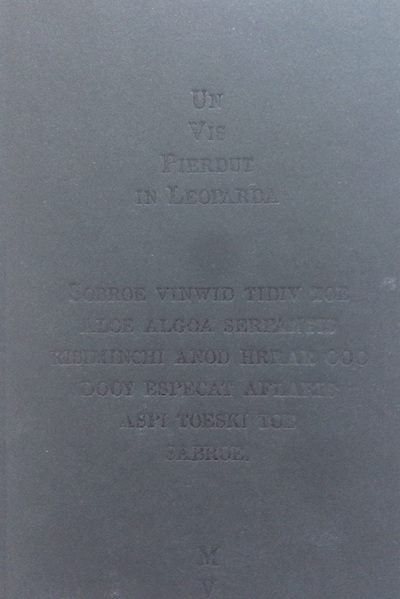
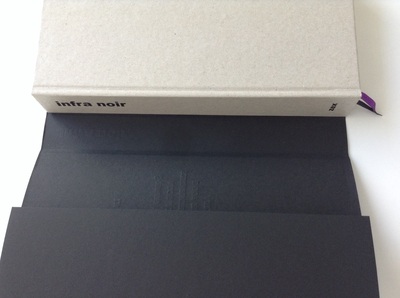
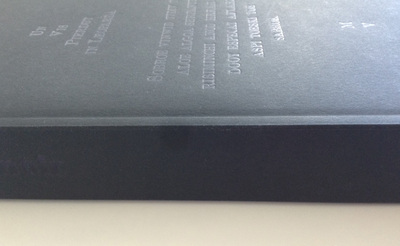
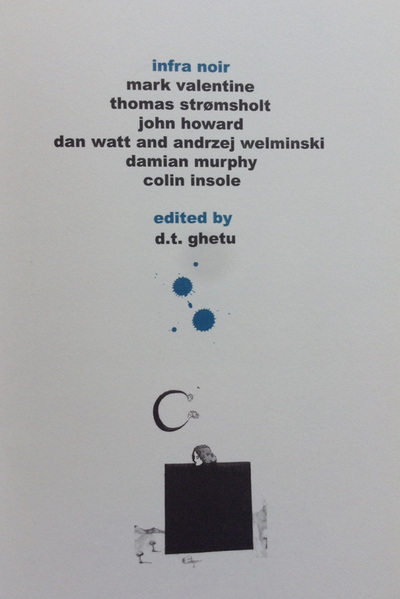
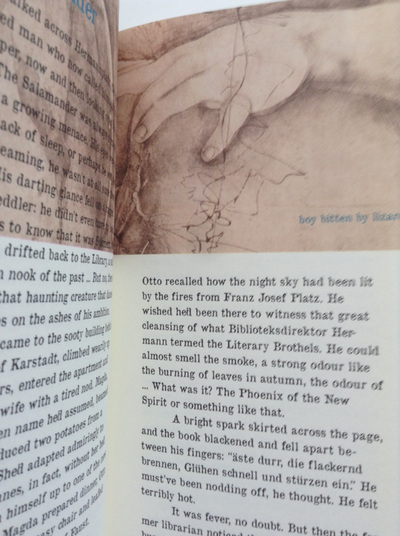
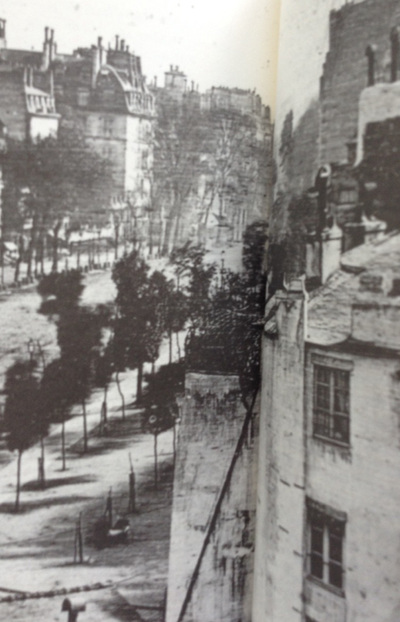
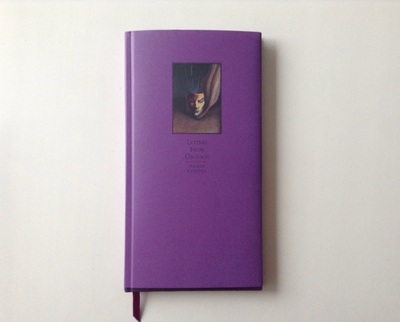
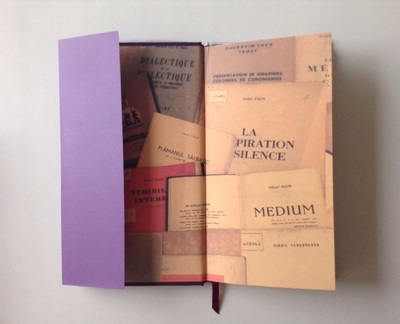
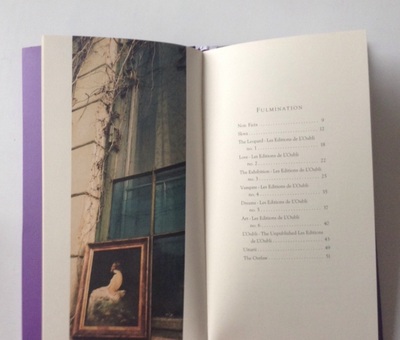
 RSS Feed
RSS Feed
